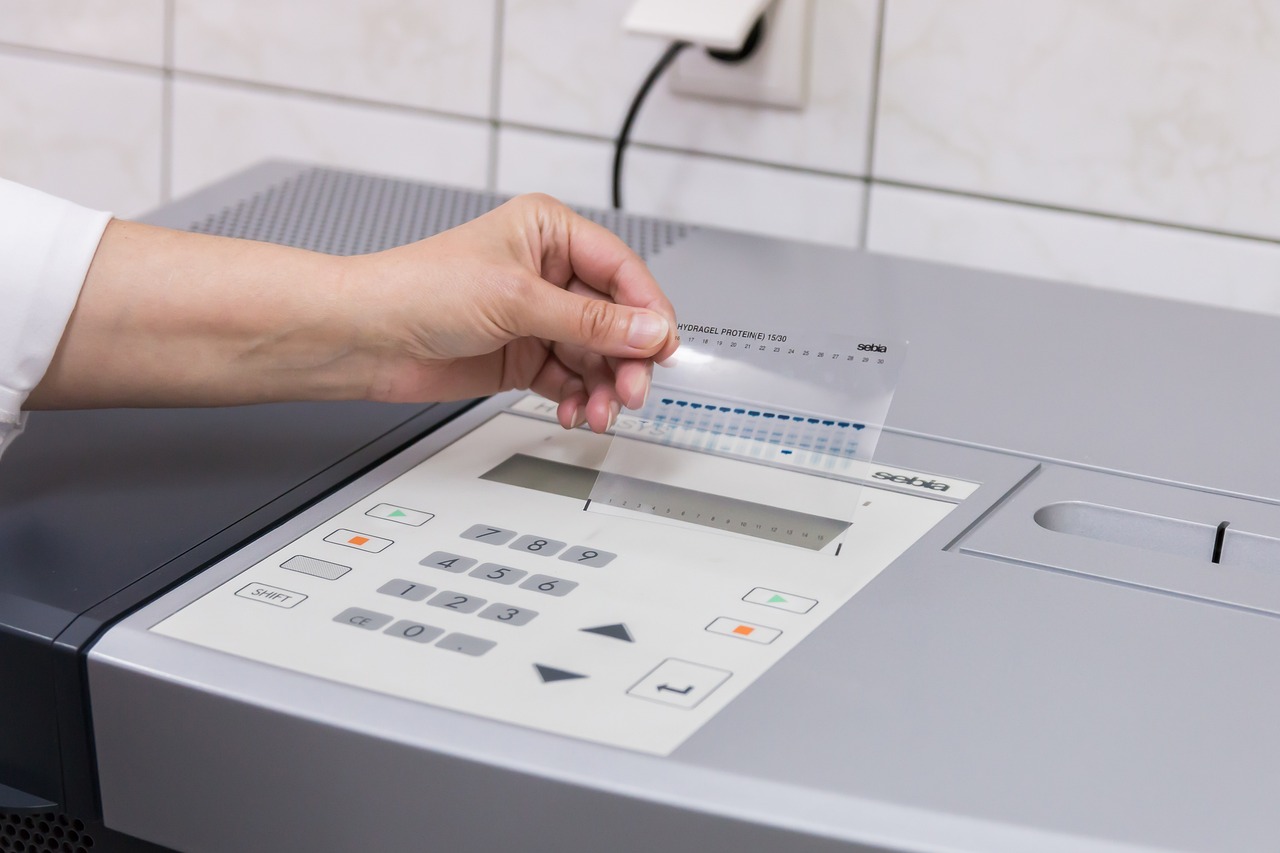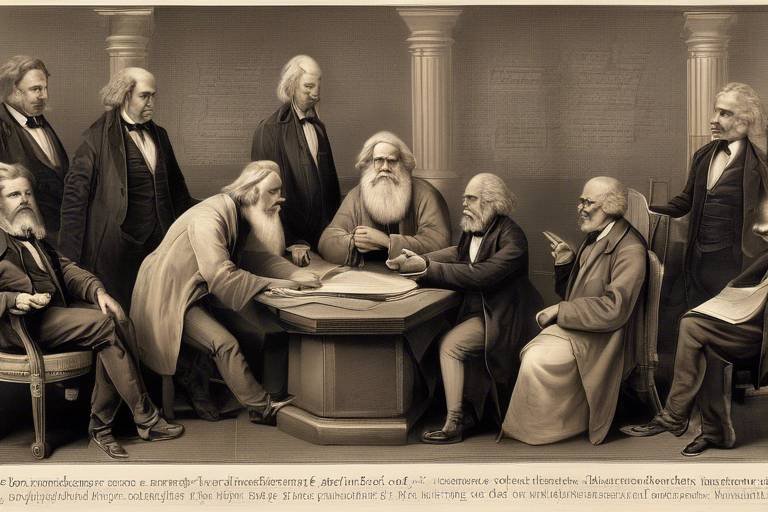Degrees of Freedom - The Philosophy of Choice in Statistics
Welcome to the fascinating world of statistics, where numbers tell stories and data dances to the rhythm of analysis! One of the key concepts that often comes up in this realm is degrees of freedom. But what does that really mean? In simple terms, degrees of freedom refer to the number of independent values or quantities that can be assigned to a statistical distribution. Imagine you’re at a party with a set number of guests; the degrees of freedom are like the number of choices each guest has for their drink, while the total number of drinks available represents the constraints of the situation. This concept is crucial because it impacts the reliability and validity of various statistical tests, making it a cornerstone of data analysis.
Understanding degrees of freedom is like unlocking a secret door to better insights. It allows researchers and analysts to grasp how much variability is present in their data and how much of that variability can be attributed to the factors they are studying. For instance, when you’re conducting a study, the degrees of freedom can determine whether your results are statistically significant or just a product of random chance. Without this understanding, one might as well be throwing darts blindfolded, hoping to hit the bullseye!
As we dive deeper into the implications of degrees of freedom, we see how it plays a pivotal role in various statistical analyses. It influences everything from confidence intervals to hypothesis testing. For example, when calculating a confidence interval, the degrees of freedom help determine the width of the interval, which in turn affects how confident we can be in our estimates. More degrees of freedom typically lead to narrower intervals, which suggest greater precision in our estimates. So, the next time you hear about degrees of freedom, remember that it’s not just a technical term; it’s a fundamental aspect of making sense of data!
In summary, degrees of freedom are not merely a mathematical concept; they represent the essence of choice and variability in statistical analysis. They guide researchers in making informed decisions, interpreting data accurately, and ultimately, drawing meaningful conclusions from their studies. So, let’s embark on this journey to explore how degrees of freedom shape the landscape of statistical analysis!

Understanding Degrees of Freedom
Degrees of freedom, often abbreviated as df, is a concept that might sound a bit daunting at first, but once you peel back the layers, it reveals a fascinating aspect of statistics. Think of degrees of freedom as the number of independent pieces of information you have available to estimate a statistical parameter. In simpler terms, it's like having a set of keys to unlock different doors in a house—each key represents a unique opportunity to explore and understand your data.
When conducting statistical analyses, degrees of freedom play a pivotal role in determining how much information is available to make inferences about a population based on a sample. For instance, if you have a sample of 10 observations, you might think you have 10 degrees of freedom. However, if you're calculating the mean of those observations, one degree of freedom is "used up" because the mean is constrained by the values of the data points. This leaves you with only 9 degrees of freedom to work with. This concept is crucial because it directly impacts the reliability and validity of statistical tests.
To illustrate this further, let’s consider a scenario where you’re analyzing the heights of a group of people. If you measure the heights of 5 individuals, you can calculate the mean height. However, if you then want to assess how much the heights vary from that mean, you must account for the fact that one of those heights is now dependent on the others. This interdependence of data points is what gives rise to the concept of degrees of freedom.
In statistical calculations, degrees of freedom can be calculated using the formula:
df n - k
Where n is the total number of observations and k is the number of parameters being estimated (like the mean). This formula highlights that as you estimate more parameters, the available degrees of freedom decrease, which can lead to less reliable results.
Understanding degrees of freedom also helps in various statistical tests, such as t-tests and ANOVA. In these tests, the degrees of freedom determine the distribution of the test statistic, which ultimately influences the conclusion you draw from your data. It's like having a set of rules for a game; if you don't understand the rules (or degrees of freedom), you may misinterpret the outcome.
In summary, degrees of freedom are not just a technical detail; they are a fundamental concept that underpins much of statistical analysis. By grasping this idea, you can better appreciate the intricacies of data interpretation and the reliability of your conclusions. The next time you dive into a statistical analysis, remember that degrees of freedom are your allies in making sense of the numbers.

Importance in Statistical Analysis
When it comes to statistical analysis, degrees of freedom are not just a technical detail; they are a crucial element that can significantly impact the outcomes of your research. Imagine you’re trying to solve a puzzle, and the pieces you have are limited. The more pieces you possess, the clearer the picture becomes. Similarly, in statistics, the degrees of freedom represent the number of independent pieces of information available to us, and this can make all the difference in understanding our data.
Degrees of freedom are pivotal in determining the validity of statistical tests. They influence various aspects, such as confidence intervals and hypothesis testing. For instance, when conducting a t-test, the degrees of freedom help define the critical values that determine whether we accept or reject the null hypothesis. If you have too few degrees of freedom, your results may not be reliable, leading to potentially misleading conclusions. This is akin to trying to assess the quality of a cake with only a few bites; you might miss out on the overall flavor.
Moreover, the importance of degrees of freedom extends to the concept of confidence intervals. These intervals provide a range within which we expect our population parameter to lie. The wider the interval, the less precise our estimate is. Degrees of freedom play a vital role in calculating these intervals. With more degrees of freedom, our estimates become more stable and reliable, which is essential for making informed decisions based on statistical evidence.
In the realm of hypothesis testing, degrees of freedom help us determine the distribution of our test statistic. For example, in a t-test, the shape of the t-distribution changes depending on the degrees of freedom. This is important because it affects how we interpret our results. A higher degree of freedom typically results in a distribution that resembles the normal distribution, providing more reliable p-values and confidence in our conclusions.
To illustrate this point, consider the following table that summarizes how degrees of freedom affect various statistical tests:
| Statistical Test | Degrees of Freedom | Effect on Results |
|---|---|---|
| T-Test | n - 1 | Influences critical values and p-values |
| ANOVA | k - 1 (between groups), n - k (within groups) | Determines partitioning of variance |
| Chi-Square Test | (rows - 1) * (columns - 1) | Affects the shape of the chi-square distribution |
Ultimately, understanding degrees of freedom is not just for the statisticians or data analysts; it’s essential for anyone who relies on data to make decisions. Whether you're a psychologist analyzing behavioral data, an economist predicting market trends, or an engineer assessing product performance, the concept of degrees of freedom is integral to ensuring that your analyses are both accurate and meaningful. So, the next time you dive into a statistical analysis, remember that degrees of freedom are your guiding light, helping you navigate the complexities of data interpretation with confidence.
- What are degrees of freedom? Degrees of freedom refer to the number of independent values or quantities that can vary in a statistical calculation.
- Why are degrees of freedom important? They are crucial for determining the reliability of statistical tests, influencing confidence intervals and hypothesis testing.
- How do degrees of freedom relate to sample size? Generally, larger sample sizes provide more degrees of freedom, which leads to more reliable statistical conclusions.
- Can degrees of freedom affect regression analysis? Yes, they impact parameter estimation and overall model fit in regression analysis.

Connection to Sample Size
When diving into the realm of statistics, one can't help but notice the **intricate dance** between degrees of freedom and sample size. It's almost like a relationship where one partner influences the other, shaping the outcome of their interactions. The concept of degrees of freedom is fundamentally tied to the number of observations in a sample, and this connection is crucial for drawing reliable conclusions from data.
In simple terms, degrees of freedom can be thought of as the number of values in a calculation that are free to vary. When we collect data, the sample size we choose directly impacts the degrees of freedom available for our statistical tests. For instance, if you have a small sample size, the degrees of freedom are limited, which can lead to **less reliable** results. Conversely, a larger sample size typically results in more degrees of freedom, enhancing the robustness of your statistical analysis.
To illustrate this connection, let’s consider a practical example. Imagine you are conducting a survey to understand consumer preferences for a new product. If you gather data from only five respondents, your degrees of freedom are quite limited. However, if you expand your survey to include 100 participants, you significantly increase your degrees of freedom, allowing for a more nuanced understanding of the data. This increase in sample size not only provides more information but also enhances the **accuracy** of confidence intervals and hypothesis testing.
Here's a simple representation of how sample size affects degrees of freedom:
| Sample Size (n) | Degrees of Freedom (df) |
|---|---|
| 5 | 4 |
| 10 | 9 |
| 30 | 29 |
| 100 | 99 |
As you can see from the table, as the sample size increases, the degrees of freedom also increase, which is a crucial factor when performing any statistical test. This relationship is not just a mere statistic; it plays a **pivotal role** in determining the validity of your results. A higher degree of freedom usually leads to a more reliable test statistic, which in turn influences the confidence you can place in your conclusions.
In summary, the connection between degrees of freedom and sample size is a fundamental concept in statistics that every researcher should grasp. It’s essential not only for conducting accurate analyses but also for making informed decisions based on the data. So next time you design an experiment or survey, remember: the **size of your sample matters**—and so does the freedom it allows!

Impact on T-Tests
The t-test is a fundamental statistical tool used to determine if there are significant differences between the means of two groups. But did you know that the concept of degrees of freedom plays a crucial role in this analysis? In essence, degrees of freedom represent the number of values in the final calculation of a statistic that are free to vary. In the context of t-tests, this means that the degrees of freedom are directly tied to the sample size and the number of groups being compared.
When performing a t-test, the degrees of freedom are calculated as the total number of observations minus the number of groups being compared. For example, if you have two groups each with 10 observations, the degrees of freedom would be calculated as follows:
| Group | Number of Observations |
|---|---|
| Group 1 | 10 |
| Group 2 | 10 |
In this case, the degrees of freedom would be:
Degrees of Freedom (10 + 10) - 2 18
With this value in hand, researchers can consult a t-distribution table to find the critical t-value that corresponds to their desired level of significance (commonly set at 0.05). This critical value helps to determine whether the observed differences between the groups are statistically significant. If the calculated t-value exceeds the critical t-value, we reject the null hypothesis, suggesting that there is a significant difference between the groups.
Moreover, the impact of degrees of freedom on the t-test extends beyond just the critical value. A higher degree of freedom typically leads to a more reliable t-test result. This is because larger samples provide more information, reducing the variability of the estimate. Therefore, researchers often strive to maximize their sample sizes, as this can enhance the robustness of their findings.
It's also worth noting that the degrees of freedom affect the shape of the t-distribution itself. With fewer degrees of freedom, the distribution is more spread out and has heavier tails, which means that extreme values are more likely. As the degrees of freedom increase, the t-distribution approaches the normal distribution, making it easier to make inferences about the population.
In conclusion, understanding the impact of degrees of freedom on t-tests is essential for anyone involved in statistical analysis. It not only influences the critical values used for hypothesis testing but also affects the reliability and validity of the conclusions drawn from the data. So next time you're crunching numbers, remember that those degrees of freedom are more than just a number—they're a key player in the game of statistics!

Role in ANOVA
Analysis of Variance, commonly referred to as ANOVA, is a powerful statistical method used to compare the means of three or more groups. One of the key components that determine how effective ANOVA is in drawing conclusions about the data is the concept of degrees of freedom. But what exactly does this mean in the context of ANOVA? To put it simply, degrees of freedom help us understand how much information we have available to estimate the parameters of our model.
In ANOVA, degrees of freedom are divided into two main categories: between-group degrees of freedom and within-group degrees of freedom. The between-group degrees of freedom reflect the number of groups being compared minus one, while the within-group degrees of freedom account for the total number of observations minus the number of groups. This division is crucial because it helps us partition variance into two components: the variance between the groups and the variance within the groups. The relationship can be summarized in the following formula:
| Type of Degrees of Freedom | Formula |
|---|---|
| Between-Group | k - 1 |
| Within-Group | N - k |
Where k is the number of groups and N is the total number of observations. Understanding these degrees of freedom allows researchers to calculate the F-statistic, which is the ratio of the variance between the groups to the variance within the groups. A higher F-statistic indicates that there is a significant difference between group means, leading to the rejection of the null hypothesis.
Moreover, the degrees of freedom play a pivotal role in determining the critical values from the F-distribution table. This is essential because it helps in setting the threshold for significance. If the calculated F-statistic exceeds the critical value, we have evidence to suggest that at least one group mean is different from the others. On the flip side, if it does not exceed the critical value, we fail to reject the null hypothesis, indicating no significant differences among the group means.
In summary, the role of degrees of freedom in ANOVA cannot be overstated. They not only help in partitioning variance but also influence the reliability of the results. By understanding how degrees of freedom work, researchers can make more informed decisions based on their data, ensuring that their conclusions are robust and statistically sound.
- What are degrees of freedom? Degrees of freedom refer to the number of independent values that can vary in a statistical calculation.
- How do degrees of freedom affect ANOVA? They determine how variance is partitioned between and within groups, influencing the F-statistic and the interpretation of results.
- Why is understanding degrees of freedom important? It is crucial for accurately interpreting statistical tests and making informed decisions based on data analysis.

Degrees of Freedom in Regression
When diving into the world of regression analysis, the concept of degrees of freedom takes center stage. Imagine you're trying to predict the outcome of a basketball game. You've got a bunch of variables—like player statistics, weather conditions, and team history—each contributing to the final score. In this scenario, the degrees of freedom represent the number of independent pieces of information you can use to make your prediction. The more degrees of freedom you have, the more robust your model becomes.
In regression, degrees of freedom are primarily linked to the number of observations and the number of parameters being estimated. To put it simply, if you have a dataset with a certain number of data points, and you're estimating multiple parameters, the degrees of freedom tell you how many of those data points can vary freely without being constrained by the parameters you’re estimating. This relationship can be summarized in the formula:
Degrees of Freedom Number of Observations - Number of Parameters
For instance, if you have 100 observations and you're estimating 3 parameters in your regression model, your degrees of freedom would be 97. This means you have 97 independent pieces of information to work with, which is crucial for making reliable predictions.
Understanding how degrees of freedom affect regression analysis is essential for interpreting the results accurately. A model with too few degrees of freedom might lead to overfitting, where the model is too complex and captures noise instead of the underlying trend. Conversely, a model with too many degrees of freedom may underfit the data, missing significant patterns. This balancing act is akin to walking a tightrope: too much weight on one side can cause a fall, while too little can leave you unsteady.
Moreover, degrees of freedom play a vital role in assessing the goodness-of-fit of your regression model. When you calculate metrics like the F-statistic or the t-statistic, the degrees of freedom determine the critical values that help you decide whether your model is statistically significant. In simpler terms, they help you answer the question: “Is my model actually capturing something meaningful, or is it just random noise?”
In summary, degrees of freedom in regression are not just a technical detail; they are a fundamental aspect that influences how well your model performs and how you interpret its results. By keeping a close eye on degrees of freedom, you can enhance the reliability of your predictions and make more informed decisions based on your data.
- What are degrees of freedom in regression? Degrees of freedom in regression refer to the number of independent values that can vary in the estimation of parameters, influencing the model's reliability.
- How do degrees of freedom affect my regression model? They determine how many independent pieces of information you have available for analysis, impacting the model's accuracy and the validity of statistical tests.
- Can too many parameters lead to issues in regression? Yes, having too many parameters relative to the number of observations can lead to overfitting, where the model captures noise instead of the underlying trend.

Practical Applications
Understanding degrees of freedom is vital for practitioners across various fields, including psychology, economics, and engineering. Why? Because it directly influences how we interpret statistical results and make decisions based on data. Imagine you're a psychologist conducting a study on the effects of a new therapy. The degrees of freedom in your analysis will determine how confidently you can assert that the therapy is effective. If your sample size is small, your degrees of freedom are limited, which means your results may not be as reliable as you'd hope. On the flip side, larger samples provide more degrees of freedom, leading to more robust conclusions.
In the realm of economics, degrees of freedom come into play when analyzing consumer behavior or market trends. Economists often rely on regression models to predict future outcomes based on historical data. Here, the degrees of freedom affect the model's fit and the accuracy of predictions. For instance, if an economist is examining the relationship between income levels and spending habits, having a larger dataset increases the degrees of freedom, enhancing the model's reliability. This is crucial for making informed policy decisions that can impact thousands of lives.
Similarly, in engineering, degrees of freedom are essential when conducting experiments or quality control tests. Engineers frequently use statistical methods to ensure products meet safety standards. For example, when testing the strength of materials, the degrees of freedom will affect the confidence intervals around the estimated strength. A higher degree of freedom allows for a more precise estimation, which is critical for ensuring that materials can withstand the intended loads without failure.
To illustrate the practical applications of degrees of freedom, let’s consider a few real-world scenarios:
- Clinical Trials: In medical research, degrees of freedom play a crucial role in determining the effectiveness of new drugs. A well-designed trial with a larger sample size increases degrees of freedom, leading to more reliable results that can influence treatment protocols.
- Market Research: Companies often conduct surveys to understand consumer preferences. The degrees of freedom in the analysis of these surveys can affect the confidence in the findings, guiding marketing strategies and product development.
- Environmental Studies: Researchers studying climate change use statistical models to predict future trends. The degrees of freedom in these models can significantly impact the reliability of predictions, which is essential for formulating policies to combat climate change.
In essence, degrees of freedom are not just a theoretical concept; they have real-world implications that affect decision-making in various sectors. By grasping the importance of degrees of freedom, professionals can enhance their analytical skills, leading to better outcomes in their respective fields.
What are degrees of freedom in statistics?
Degrees of freedom refer to the number of independent values or quantities that can vary in a statistical calculation. They are crucial for determining the reliability of statistical tests.
Why are degrees of freedom important?
Degrees of freedom are important because they affect the validity of statistical tests, confidence intervals, and hypothesis testing, ultimately influencing data interpretation.
How do degrees of freedom relate to sample size?
Generally, larger sample sizes provide more degrees of freedom, leading to more reliable statistical conclusions. This relationship is fundamental in statistical analysis.
Can degrees of freedom affect regression analysis?
Yes, in regression analysis, degrees of freedom influence the estimation of parameters and the overall fit of the model, which impacts predictions and interpretations of relationships.

Real-World Examples
Understanding the concept of degrees of freedom becomes much clearer when we look at real-world examples. Let's dive into a few scenarios that illustrate how degrees of freedom play a crucial role in various fields and decision-making processes.
In the realm of psychology, researchers often conduct experiments to understand human behavior. For instance, suppose a psychologist is studying the effects of sleep deprivation on cognitive performance. They might use a sample of 30 participants, measuring their performance on cognitive tasks before and after a night of limited sleep. Here, the degrees of freedom would be calculated as the number of participants minus one (n-1), which equals 29. This calculation is essential because it influences the t-test results, helping the researcher determine whether the observed effects are statistically significant or simply due to random chance.
Similarly, in economics, degrees of freedom are vital when analyzing data sets. Imagine an economist examining the relationship between education levels and income across different regions. If they collect data from 100 regions, they have 99 degrees of freedom for their regression analysis. This means they can estimate the impact of education on income while accounting for other variables, such as age and industry. The more degrees of freedom they have, the more reliable their estimates become, ultimately guiding policy decisions that could affect educational funding and economic development.
In the field of engineering, degrees of freedom also play a significant role. Consider a structural engineer designing a bridge. They must analyze various load conditions and material strengths to ensure the bridge can withstand forces like wind and traffic. If they perform a statistical analysis on the load data collected from a sample of 50 different bridges, the degrees of freedom would be 49. This information is crucial for determining the safety margins and ensuring that the bridge design meets regulatory standards.
To further illustrate these points, let’s take a look at a simplified table that summarizes how degrees of freedom affect different scenarios:
| Field | Example | Degrees of Freedom Calculation |
|---|---|---|
| Psychology | Effects of sleep on cognitive tasks | n - 1 (30 - 1 29) |
| Economics | Education levels and income analysis | n - k (100 - 1 99, where k is the number of predictors) |
| Engineering | Bridge load analysis | n - 1 (50 - 1 49) |
These examples not only demonstrate the practical applications of degrees of freedom but also highlight their importance in ensuring that statistical analyses are both valid and reliable. By understanding how degrees of freedom influence statistical tests, researchers and practitioners can make informed decisions that impact their fields significantly.

Common Misconceptions
When it comes to the concept of degrees of freedom in statistics, there are several misconceptions that can lead to confusion, especially for those new to the field. One of the most common misunderstandings is that degrees of freedom are simply a technicality, a number that exists in the background of statistical tests without any real significance. In reality, degrees of freedom are crucial to the validity of statistical conclusions. They represent the number of independent pieces of information that are available for estimating parameters, and this directly affects the reliability of the tests being conducted.
Another prevalent myth is that a higher number of degrees of freedom always leads to better results. While it is true that more degrees of freedom can enhance the precision of statistical estimates, it does not automatically guarantee that the results are meaningful or applicable. For instance, a poorly designed study with a large sample size might yield a high degree of freedom but still produce misleading results due to biases in data collection or analysis.
Many also mistakenly believe that degrees of freedom are only relevant in certain types of tests, such as t-tests or ANOVA. However, degrees of freedom are a fundamental concept that permeates various statistical methodologies, including regression analysis and chi-square tests. Understanding how degrees of freedom function across different contexts can empower researchers to make more informed decisions and interpretations.
To further clarify these misconceptions, here are some key points to keep in mind:
- Degrees of freedom are not just a number: They represent the number of independent values that can vary in your analysis.
- More degrees of freedom do not always mean better results: Quality of data and study design are equally important.
- Degrees of freedom apply to all statistical tests: They are not limited to just a few types of analyses.
By addressing these misconceptions, we can enhance our understanding of degrees of freedom and improve the quality of statistical analysis. Awareness of these common pitfalls not only aids researchers in their studies but also helps practitioners in fields such as psychology, economics, and engineering make better data-driven decisions.
Here are some common questions regarding degrees of freedom:
- What are degrees of freedom? Degrees of freedom refer to the number of independent values that can vary in a statistical calculation.
- Why are degrees of freedom important? They affect the reliability of statistical tests and influence the interpretation of results.
- How do degrees of freedom relate to sample size? Generally, larger sample sizes provide more degrees of freedom, leading to more reliable conclusions.
- Can degrees of freedom apply to all statistical tests? Yes, degrees of freedom are relevant in various statistical analyses, including t-tests, ANOVA, and regression.
Frequently Asked Questions
- What are degrees of freedom in statistics?
Degrees of freedom (df) refer to the number of independent values that can vary in a statistical calculation. Think of it as the number of choices you have when estimating a statistical parameter. The more degrees of freedom you have, the more reliable your statistical tests and estimates are likely to be.
- Why are degrees of freedom important in statistical analysis?
Degrees of freedom are crucial because they directly influence the validity of statistical tests. They affect confidence intervals, hypothesis testing, and how we interpret data. Essentially, they help us understand how much information we have to work with when analyzing a dataset.
- How do degrees of freedom relate to sample size?
The relationship between degrees of freedom and sample size is significant. Generally, larger samples provide more degrees of freedom, which enhances the reliability of statistical conclusions. More data means more information to draw from, leading to more accurate results.
- What is the impact of degrees of freedom on t-tests?
In t-tests, degrees of freedom influence the critical values that determine whether to accept or reject the null hypothesis. The df help define the shape of the t-distribution, which is essential for making accurate inferences about the population based on your sample data.
- How do degrees of freedom play a role in ANOVA?
In Analysis of Variance (ANOVA), degrees of freedom are used to partition variance among groups. This helps researchers understand the differences between group means more effectively. Without the correct df, your ANOVA results might be misleading.
- What is the significance of degrees of freedom in regression analysis?
In regression analysis, degrees of freedom affect the estimation of parameters and the overall fit of the model. They influence how well the model predicts outcomes and how we interpret the relationships between variables. More df can lead to a more robust model.
- Can you provide real-world examples of degrees of freedom?
Absolutely! For instance, in psychology, researchers might use degrees of freedom to analyze the effectiveness of a new therapy by comparing it with a control group. In economics, degrees of freedom help in evaluating market trends based on sample data. These examples highlight how critical df are in making informed decisions.
- What are some common misconceptions about degrees of freedom?
One common misconception is that degrees of freedom are just a technical detail that doesn't matter much in practice. In reality, they are fundamental to the accuracy of statistical analysis. Understanding df can significantly enhance the quality of your research and interpretations.


















